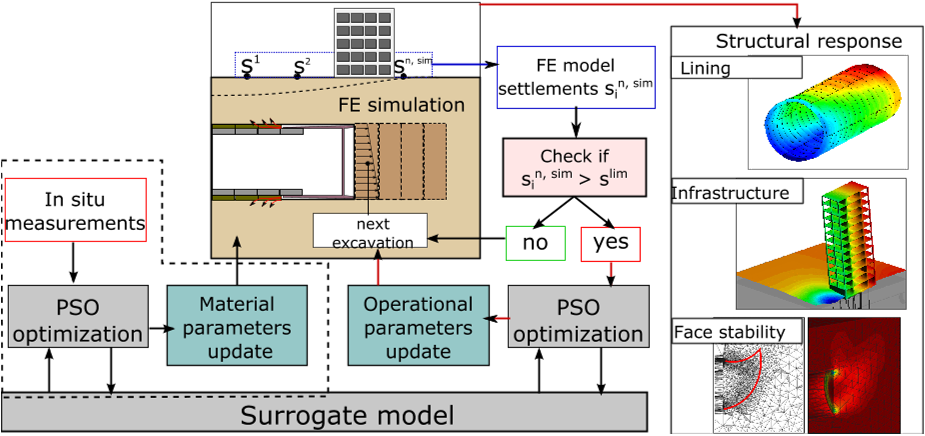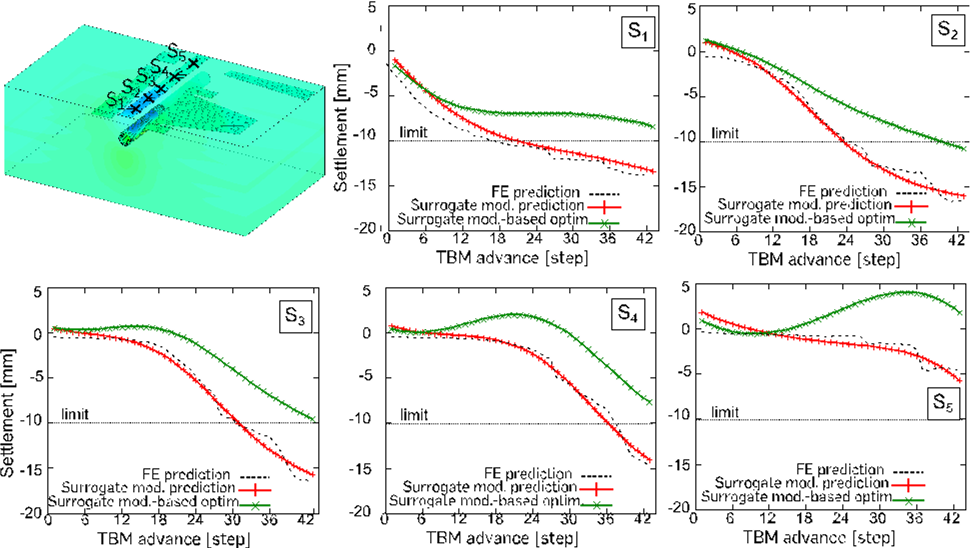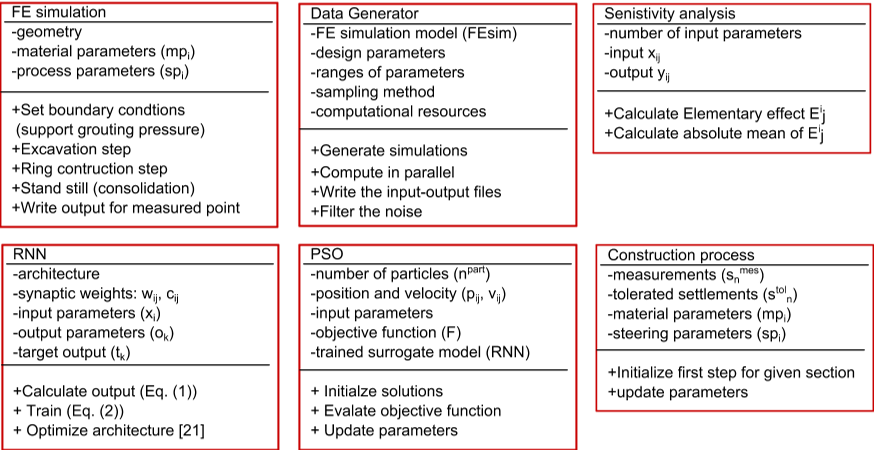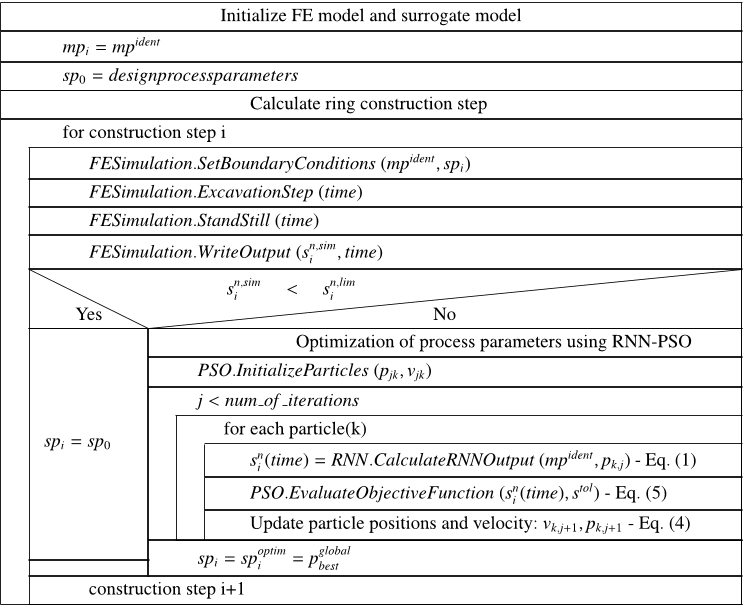A hybrid finite element and surrogate modelling approach for simulation and monitoring supported TBM steering
TLDR
The proposed technique combines the capacity of a process-oriented 3D simulation model for mechanized tunnelling with the computational efficiency of surrogate (or meta) models based on artificial neural networks to accurately describe the complex geological and mechanical interactions of the Tunnelling process.About:
This article is published in Tunnelling and Underground Space Technology.The article was published on 2017-03-01 and is currently open access. It has received 46 citations till now. The article focuses on the topics: Surrogate model & Computational steering.read more
Figures

Figure 4. Hybrid FE and surrogate model-supported steering of the mechanized tunnelling process. 
Figure 7. Data exchange between the TIM and the FE simulation model ekate. 
Figure 11. Model-based optimization of TBM-steering parameters: Settlements at five measurement points with and without optimized steering parameters. 
Table 4. Algorithm for model update: Identification of the soil parameters based on in situ measurements. 
Figure 15. Main classes of the steering support tool including main objects and functions. 
Table 1. Algorithm for the hybrid FE and surrogate model-supported steering in mechanized tunnelling
Citations
More filters
Journal ArticleDOI
An integrated platform for design and numerical analysis of shield tunnelling processes on different levels of detail
TL;DR: SATBIM is presented, an integrated platform for information modelling, structural analysis and visualisation of the mechanised tunnelling process for design support, based on a multi-level integrated parametric Tunnel Information Model, enabling the modelling on different Levels of Detail (LoDs) for each physical component, process information, and analysis type.
Journal ArticleDOI
Artificial neural network surrogate modelling for real-time predictions and control of building damage during mechanised tunnelling
TL;DR: Finite element simulations are used to predict the soil-structure interaction in mechanised tunnelling during the tunnel advancement to provide optimised operational parameters during the advancement of tunnel boring machines below vulnerable buildings, such that the risk of damage for existing buildings is minimised.
Journal ArticleDOI
Recent advances and applications of surrogate models for finite element method computations: a review
Jakub Kůdela,Radomil Matousek +1 more
TL;DR: This review discusses significant publications where surrogate modelling for finite element method-based computations was utilized and discusses major research trends, gaps, and practical recommendations that makes surrogate modelling more accessible.
Journal ArticleDOI
A novel displacement back analysis method considering the displacement loss for underground rock mass engineering
TL;DR: In this paper, a hybrid optimization algorithm based on the Gaussian process (GP) and particle swarm optimization (PSO) is presented to reduce the computational cost of back analysis, which can effectively predict more reasonable mechanical parameters and displacement loss using the monitored displacement.
Journal ArticleDOI
Predictive control of slurry pressure balance in shield tunneling using diagonal recurrent neural network and evolved particle swarm optimization
Xiaofei Li,Guofang Gong +1 more
TL;DR: Simulation results demonstrated that the presented approach can accurately track the desired water-earth pressure and significantly enhance the robustness of slurry supporting system in tunneling, and the novel EPSO also performed higher convergence speed and precision than the classic algorithms used for comparison.
References
More filters
Proceedings ArticleDOI
Particle swarm optimization
TL;DR: A concept for the optimization of nonlinear functions using particle swarm methodology is introduced, and the evolution of several paradigms is outlined, and an implementation of one of the paradigm is discussed.
Journal ArticleDOI
Particle swarm optimization
TL;DR: A snapshot of particle swarming from the authors’ perspective, including variations in the algorithm, current and ongoing research, applications and open problems, is included.
Journal ArticleDOI
Soil mechanics and plastic analysis or limit design
D. C. Drucker,W. Prager +1 more
Journal ArticleDOI
Characterization of geotechnical variability
Kok-Kwang Phoon,Fred H. Kulhawy +1 more
TL;DR: In this paper, the three primary sources of geotechnical uncertainties are inherent variability, measurem, and measurem uncertainties, and the three main sources of variability are measurem and inherent variability.
Related Papers (5)
A 3D finite element simulation model for TBM tunnelling in soft ground
Thomas Kasper,Günther Meschke +1 more